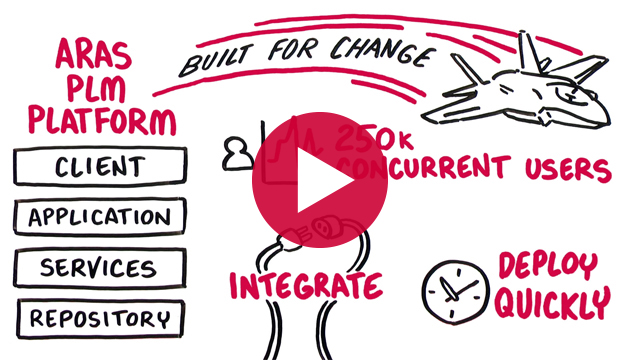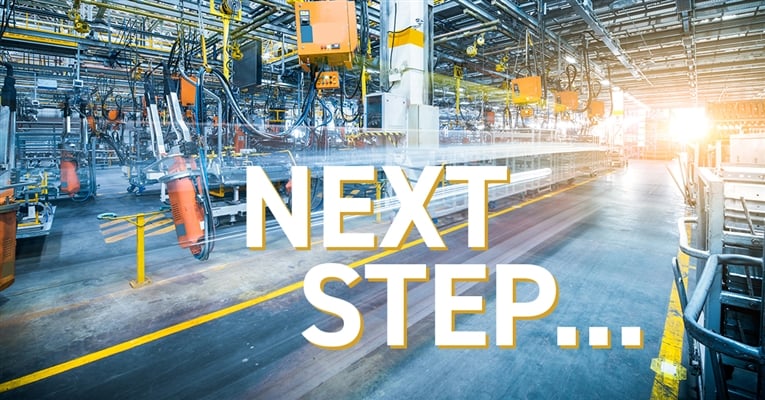Teamcenter Enterprise, or Metaphase as it was known back then, has been around since the mid 1990’s and, and although no longer being developed, still has a significant number of users around the world, particularly in Aerospace and Defense. Yet, these organizations have been hesitant to move to the traditional PDM/PLM platforms that have been paraded in front of them in the years since.
A Brief History of Metaphase
During the late 90’s, with support from Boeing, Metaphase rapidly became the Product Data Management platform of choice for large global companies with highly differentiated business processes. Uniquely for the time, Metaphase combined performance, reliability, and scalability with unmatched flexibility to develop the specific data models, business rules, and workflows that large global enterprises, developing complex products, needed.
A web layer and more standardized capabilities, such as Change, Document & CAD Management, were released in the early 2000’s when Metaphase was also rebranded as Teamcenter Enterprise. But even these standard capabilities were designed to be customizable. It was then sold alongside ‘Teamcenter Engineering’ (previously known as iMAN).
To the surprise of many, major development work on the platform ceased (after its owner SDRC was merged with Unigraphics) in favour of a single Teamcenter platform. Known in the industry as ‘Teamcenter Unified’, this new product was positioned to replace both Teamcenter Engineering and Enterprise and contained the best aspects of both. In due course, ‘Teamcenter Unified’ was further re-branded simply as ‘Teamcenter’.
However, to those familiar with both Teamcenter Engineering and Enterprise, today’s Teamcenter bears a striking resemblance to Teamcenter Engineering. And although it contains some solutions, particularly in Aerospace & Defense, that are a testament to its mixed heritage, if you sat an iMAN expert from 20 years ago down in front of Teamcenter he/she would feel much more at home than a similar time-travelling Metaphase expert.
An Out-of-the-Box Metaphase Implementation Does not Exist!
In contrast to Metaphase/Teamcenter Enterprise, Teamcenter Engineering was always considered a tool that you implemented ‘out of the box’ because of its stable and mature CAD data management capabilities.
This is a paradigm that largely holds true with today’s Teamcenter. Few customers customize in the way that they did with Metaphase. Although some templated solutions were created later in its life, most Metaphase customers created bespoke data models and large volumes of custom code to achieve their process automation goals.
This means that with the amount of custom data models and code inherent in most Teamcenter Enterprise implementations today, switching to Teamcenter ‘Unified’ is no simple task. Customers embarking on such a journey are essentially implementing a new PLM system with all the challenges that entails. And why would they even want to do that when they would be giving up the flexibility that motivated their original investment in Metaphase?
The original challenges that motivated companies to invest in Metaphase all those years ago have not disappeared. In fact, they have become more acute. More than ever, they need the ability to quickly deliver any product‐related business process, with any type of data, anywhere in the world.
Parallels Between Metaphase & Aras Innovator
There are interesting parallels between Metaphase in the 1990’s and Aras Innovator today. Like those Metaphase pioneers, Aras has recognized global enterprises that are developing complex products need to be able develop specific data models, business rules, and workflows to support highly differentiated business processes.
But, Aras has gone much further by designing the most modern, flexible, upgradable service-oriented PLM architecture (SOA) in the industry. This PLM SOA delivers a set of standardized ‘building block’ web-services (including data, lifecycle, effectivity, variants, workflow, access control, reporting modelling frameworks) which are all optimized for performance and scalability.
You can learn more about Aras’s unique PLM platform technology here: 
By assembling these blocks according to their needs, global enterprises are able to create highly differentiated & reliable PLM business applications:
- Far more quickly than would otherwise be possible
- With better performance (all components have been built with performance in mind)
- More reliably (all components go through a rigorous QA process)
- Without upgradeability concerns (upgrades are included at no additional charge in the Aras subscription thanks to our ability to separate applications and customizations from the underlying platform)
- That can be integrated more easily with other business systems (thanks to the Open Aras API)
Should Teamcenter Enterprise Users Consider Aras?
Teamcenter customization is a very complex and expensive undertaking—not just from an initial development and implementation perspective—customizations also need to be maintained and financed across upgrades.
The first key question that companies still using Teamcenter Enterprise should ask themselves is whether their custom capabilities are important and strategic enough to be needed in their next generation PLM solution.
If the answer to this question is ‘yes,’ the case for Aras Innovator is compelling.
For all the reasons outlined above, because it was designed with this purpose in mind, Aras is significantly easier to use than any other PLM system. The highly differentiated and reliable PLM business applications, that companies have come to rely on in Metaphase/Teamcenter Enterprise, are much easier to recreate in Aras Innovator than in any other PLM solution.
Moreover, Aras will continue to upgrade those custom solutions for subscribers (whatever the level of customization) at no additional cost.
Finally, given that Metaphase/Teamcenter Enterprise customers will also be faced with a complex data migration to Teamcenter Unified, the challenge of mapping and migrating that data into Aras is likely to be no more complicated. In fact, it is likely to be easier, given that it will be easier to build a custom data model in Aras that aligns to a custom data model in Teamcenter Enterprise.
So for those Metaphase/Teamcenter Enterprise customers wondering where to go next, why not restart your PLM journey with Aras? Many of the things you liked about Metaphase/Teamcenter Enterprise, you will find in Aras Innovator, plus much more.
Get in touch with Aras today, or get started by downloading Aras now.
Discover why the world’s most innovative companies are choosing Aras to meet their digital transformation needs.


